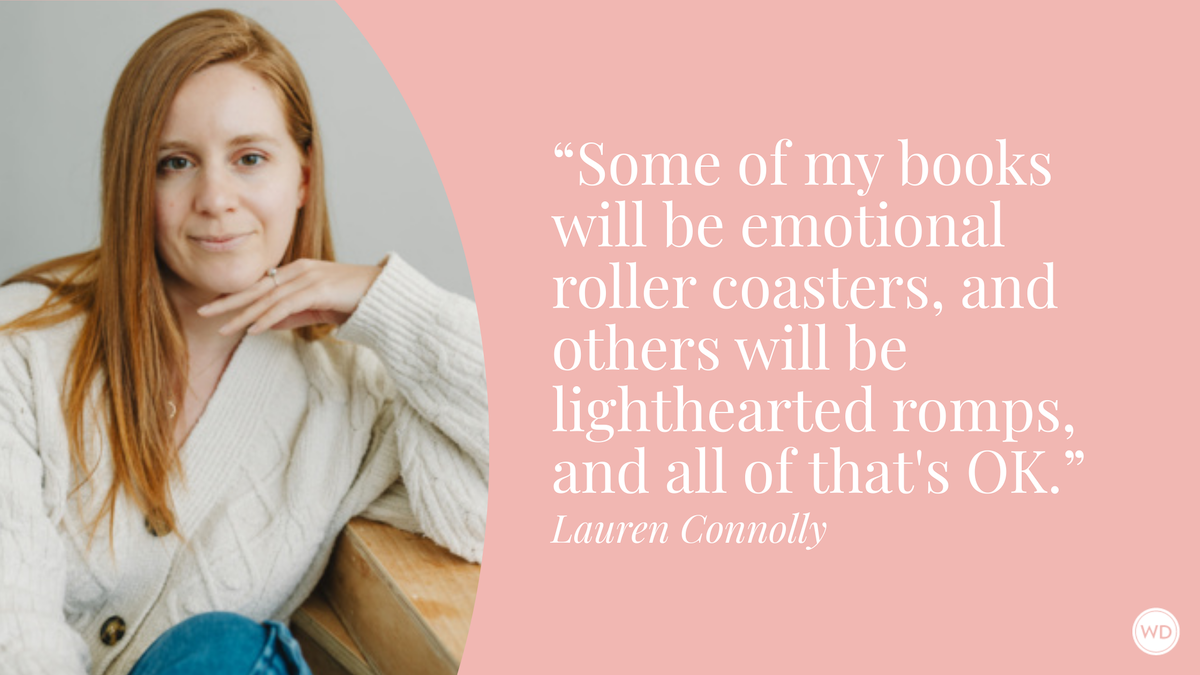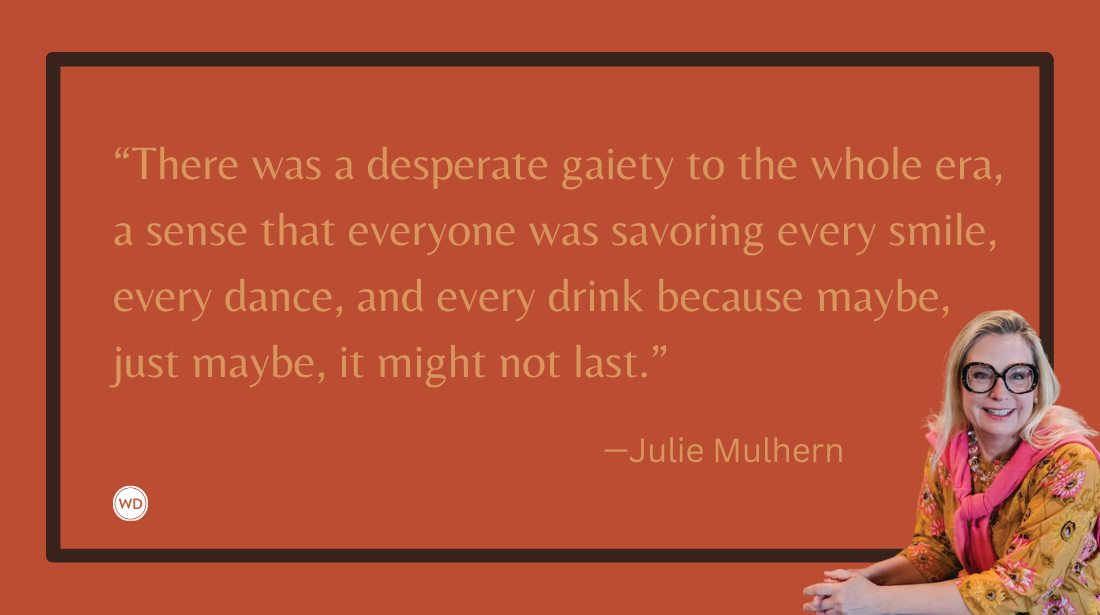How Do Characters Who Don’t Know How to Fight, Fight? (FightWrite™)
Trained fighter and author Carla Hoch discusses how to write scene with characters who are untrained for more realistic fighting sequences.
This year on the WD blog, FightWrite™ is walking through creating a fight scene start to finish. Over the next few posts, we will look at the three “whos” in your fight scene: the character, the reader, and you the writer. This post focuses on fight scene characters, but not in the way you might suspect.
Over the past six years of mentoring writers and editing fight scenes, I have seen some pretty epic brawls: hired assassins, mob bosses, magical/mythical beings, beasties, robots, aliens, even an evil Santa. Seriously, I’ve just about seen it all. But, not long ago I was presented with a fight scenario through a book review that I had never considered. The reviewer asked, “How do people who don’t know how to fight, fight?” It’s a great question and the reality of everyday life.
How Many People Really Know How to Fight?
In 2017, the most recent study I could find, an estimated one percent of people in the U.S. ages six and up did martial arts. The statistic wasn’t broken down into age brackets nor did it report how many of those people trained to proficiency. But, it’s fair to assume that the number of adults who do fight training to proficiency is well below one percent. So, if it’s realism you are going for in your work, it’s realistic that somebody in a fight will not know how to respond productively. That puts us back to the question, how will an untrained person fight? While I can’t definitively say what every untrained person would do, I can say that by virtue of the fact they are human, their response to a physical threat will likely be greatly impacted by sociological pressures, psychological wiring, and biological construct.
Sociological Pressures
When it comes to trained fighting, men and women do NOT differ. I cannot stress this enough. Proper fight technique is based on physics, and science isn’t sexist. However, when it comes to untrained fighting, men and women can differ in their fighting style as well as their willingness to engage. But this isn’t about gender as much as how the world around them defines their gender. Whether unspoken or stated outright, we learn what society expects of us and often conform to that.
In modern society and throughout history, men have been expected to know how to fight. It is considered inherent to their gender and a part of their masculinity. It is an unfair pressure but exists nonetheless.
The pressure on women is quite different and dependent upon their community. In advantaged communities, participating in a physical altercation can be viewed as unfeminine and divisive to the “tribe.” Rather than being physically aggressive, women from these communities may fight passively with verbal/social intimidation in order to assert dominance.
However, in disorganized neighborhoods where residents are disadvantaged and lack resources, the view of women fighting is not the same. When women from this construct get into a fist fight, it is not contrary to the community’s concept of femininity. In fact, unwillingness to engage can be seen as weakness. And, in communities lacking in resources, weakness is a detriment and can be seen as less attractive. That is not to say that violence is encouraged. It is only to say that it is not looked down upon as divisive to the “tribe.” Rather, it demonstrates that a woman can be a tribe unto herself.
So, before asking how an untrained character would fight, ask if their community would even allow it. That is not to say that a character will not defy their community or “tribal customs.” But, to do so is defiant and you have to consider how their community will respond to that behavior. And don’t assume that in modern times, martial arts and fight training is always embraced, especially for women. I can tell you from personal experience, it is not.
IndieBound | Bookshop | Amazon
[WD uses affiliate links.]
Psychological Wiring
How people fight is also heavily influenced by how their brains are hard-wired to respond to threat. Bear in mind that very few people maintain the same threat response all the time. Your character may behave contrary to what comes naturally to them depending upon the stakes of the fight. However, many people do have a predominant response.
Threat Responses
With each of these responses, I have a name that I assign characters who have it. The name reminds you of what’s good about that threat response because, honestly, none are inherently bad. Each can be an attribute. But they can also be a detriment. I’ll give you an idea how.
Fight: I call these characters the “push backs,” because if you push them, they will push back. When a “push back” character is startled, they may lunge in the direction of the threat or ball up their fists in defense even if they don’t know what to do with them. That boldness can get them into trouble.
Flight: A “flight” character will run from the threat. I call these characters “messengers.” They can run to tell others of the threat. But they may also run and leave others to fend for themselves.
Freeze: A “freeze” character will go completely immobile. They are the “snipers.” Even though terrified, these characters will not move which can help them to remain unseen by the threat. It can also make them easy pickings.
Front: "Front" characters put on a good front. These characters seem like “push back” characters but are actually “chest bumpers.” They will hold up their fists and bump chests with an opponent, but they do so to avoid confrontation rather than participate in it. Sometimes the gamble pays off and the fight is avoided. But sometimes, when someone calls their bluff, the “chest bumper” doesn’t fight back and suffers.
Follow/Fawn: In order to survive, these characters follow along, fawn, or submit to their aggressor. Here we have our “masters of subterfuge.” A character who submits to the threat will go along with whatever is demanded of them in order to remain safe. Their submissive attitude can allow them to wait for an opportunity to escape or better moment to attack. Characters with a follow/fawn response can be great spies. Unfortunately, they can also be treasonous.
Biological Construct
How a character is built can definitely impact how they respond to a physical threat. Even when not faced with having to fight, we all learn what we can do with our size. Tall people know they can reach things. Short people know they move a little quicker. So, consider what your character knows about themselves already. Here’s a few ideas on that.
Characters who are large, either in height, weight, or both may grab their smaller aggressor to cause pain, push, throw or pin their combatant. If they choose to hit their assailant, their larger size can work to their advantage by providing a greater potential for more force. It can be a disadvantage as physics works against their speed.
Smaller characters, even those whose natural response to threat is fighting, may avoid confrontation for the simple fact they are smaller. If they do choose to engage, they may use their speed to maneuver around their opponent. They may also be more likely to use weaponry. This is especially true of women. Smaller characters are far more susceptible to injury and have less potential for creating force.
When a fight takes place
So, what does it look like when untrained characters engage? I was a high school teacher for about a decade and saw my share of fights between untrained combatants. Here is what I noticed.
The males generally tried to look like they knew what they were doing. They clenched their hands into fists and hit each other from every angle. It was not unusual to see “haymaker” punches. These are the wide punches you often see in movies. The fighters also grabbed each other by the shirt to sling each other down, tackled one another at the waist and rammed their opponent’s head into lockers or the ground.
What I never saw among the males were groin punches or hair pulling. However, they had a crowd around them and may have felt pressured to fight in a certain way. I have been told that on the street, without the pressure of onlookers, that is not the case.
I broke up many male fights simply by yelling. A time or two, when I simply got close enough and they saw me, they stopped. Every now and then larger students or teachers had to step in. I always hated to see the students fight. But the male fights were more disconcerting than frightening.
The female fights, however, were far more brutal. They grabbed hair, earrings, nose rings, clothing, you name it. I’ve seen shirts ripped and females just toss them aside and keep going. They punched, slapped, and scratched one another as well. I recall seeing a lot of “hammer fists.” That is a strike where the fist is clenched and brought down like a hammer. I also saw the females use weaponry more than the males.
Yelling seldom stopped the female fights and I never stepped in to stop the action. Even large male students were hesitant to break up the female fights. Once the females engaged, they seemed blind to everything around them except their target. Female fights were scary.
I only witnessed one fight between a male and female. The female slapped the male and the male stood his ground without striking back. Had there not been a crowd, that may not have been the case. When the female was moved away, the male immediately turned around and punched the wall several times.
I do not remember even once a student yelling for help when attacked. And, in teaching self-defense, I can tell you that it is hard to get people to cry out for aid even in a controlled environment. It may be that your untrained character, or trained for that matter, is attacked and never cries out for help.
When you sit down to write that fight scene with people who don’t know how to fight, don’t feel pressured to make them respond effectively. They don’t have to throw a punch or yell. It may be that they run or simply wake up in the hospital. What you want, above all, is a fight scene that furthers the story and engages the reader. And, I can just about guarantee you that most of your readers will relate more to a character that doesn’t know the first thing about hand-to-hand combat than one who does.
Next month we will look at how to pick a fighting style for those character who do know how to fight. Until the next round with FightWrite®, get blood on your pages.
Carla Hoch is the award-winning blogger of FightWrite® and author of the Writer’s Digest book Fight Write: How to Write Believable Fight Scenes. She is a WDU instructor who regularly teaches on the craft of writing fight scenes, action, and violence as well as the mechanics of fighting for writers. Carla is a world champion jiujitsu player and has experience in almost a dozen fighting styles. She lives and trains outside Houston, Texas.









